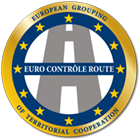ECR in search of enforcement technology of the future
Any enforcer will tell you that one of the main challenges they face is that enforcement staff is outnumbered by the vast numbers of HGV’s and coaches involved in the European logistic chain.
Not all of these trucks are non-compliant of course, but because of the ongoing internationalisation and growing numbers involved in this ever expanding industry it is easier for the black sheep to hide than in other modes of transport.

A potential solution is data driven and risk based enforcement. To achieve this, reliable collection of enforcement data is needed. In the current climate of budget and personnel cuts, technological support is more vital than ever.
WIM (weigh in motion) systems are currently being used in several member states, but the exchange of WIM data between MS’s is not in place yet and the systems could potentially be used for more enforcement fields than they currently are.
Time to have a look at what is technically possible: now and in the near future.
To this end ECR and TISPOL together with ISWIM brought together enforcers, scientists and vendors to discuss what the end user needs are and to what extent the technology can support those needs.
During the afternoon workshop sessions the following conclusions were drawn:
• the limitations to use WI- like systems on an EU wide scale are mainly political and not technical in nature
• WIM systems require a considerable investment and the authorities are hesitant to commit to such an investment in current climate:
o without a solid business case comparing the investment costs to the costs saved in human resource costs
o without the systems being multi-purpose, i.e. used for enforcement other than overloading, such as ADR recognition, itinerary control, vehicle dimensions and speeding.
o the assurance that the data collected will stand up in court, EU standard type approval
• To reach efficient European pre-selection and risk-based targeting there is a need for the different member states to communicate their WIM data. In order to facilitate this the weight and dimensions (as well as tolerances) should be harmonized EU-wide.
• There needs to be a dialogue between vendors and end-users to tailor the WIM systems to realistic enforcement needs.
• Fully automatic direct enforcement might be in time technically feasible (improvement reliability sensors, registration recognition,…), but the political and privacy considerations are currently deemed to great to be seen as a realistic option in the near future.
Please find a list of the presentations below (to view the content click on the title of the presentation)
Introduction ECR and TISPOL - Gerard Schipper
Introduction ISWIM - Bernard Jacob
Developments in Weighing in Motion - Hans van Loo and Victor Dolcemascolo
Developments in Enforcement of Heavy Goods Vehicles - Ad Hellemons
The Brazilian WIM Enforcement Program - Valter Tani
01/03/2013 - 10:06
